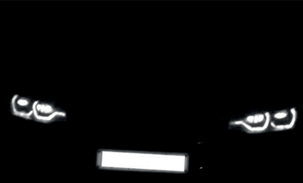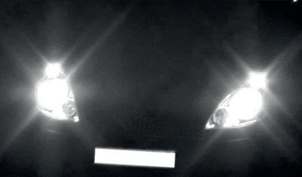Image Filters
Video camera image filters are optical lenses that provide additional effects to the picture, such as reducing glare, diffusing light, and enhancing desired colors. A high-quality light filter can improve image clarity and transmission, while a poorly chosen or low-quality filter can negatively impact video quality. There are various types of filters available, including optical filters, polarizing filters, and infrared filters.
Optical Filters
Adding optical filters to the light path in the camera can enhance the image quality in certain scenarios. However, it is important to note that these filters often reduce the amount of incoming light, resulting in decreased performance in low-light conditions and increased image noise. As a result, we advise against using optical filters for vehicle license plate recognition purposes.
Polarizing Filters
A correctly adjusted polarizing filter has the potential to minimize reflections from smooth surfaces like car windshields or roads. It can be beneficial for general traffic monitoring, enhancing visibility inside vehicles, for instance. However, it is important to note that a polarizing filter blocks approximately 50% of incoming light, which can significantly compromise the clarity of license plate visibility. Therefore, we advise against using a polarizing filter for this purpose.
Infrared (IR) Filters
An IR-pass filter is designed to obstruct visible light while permitting thermal infrared light to pass through. Due to the fact that license plates reflect a higher amount of infrared light compared to their surroundings, this filter can result in a darker image where the license plate appears prominently illuminated. This can assist recognition algorithms in distinguishing the license plate more effectively. Additionally, using the IR-pass filter can be an effective method to enhance recognition quality during nighttime conditions.
The filter effectively blocks light from car headlights, reducing glare and lens reflections. LED headlights are filtered efficiently, while halogen headlights emit significant light in the infrared wavelength range, which is not effectively filtered out. The comparison below illustrates the difference in images captured with LED and halogen headlights:
- The IR-pass filter efficiently blocks light from LED headlights, reducing lens glare and stray light.
- The IR-pass filter allows light from halogen headlights to pass through, resulting in lens glare.
Recommendations
We recommend implementing a compromise solution that involves adjusting the size and position of the field of view to encompass the zone with the highest probability of license plate locations. By doing so, the amount of light entering the camera from car headlights can be reduced.
This adjustment can be achieved by making slight changes to the camera's inclination angle, which depends on its installation height, focal length, and distance to the observed object. An example of minimizing the capture area is illustrated in the accompanying image:
In general, the use of an IR-pass filter in night mode can enhance detection speed and accuracy, and we recommend its utilization during low-light conditions. However, it should be deactivated during daytime operation.


